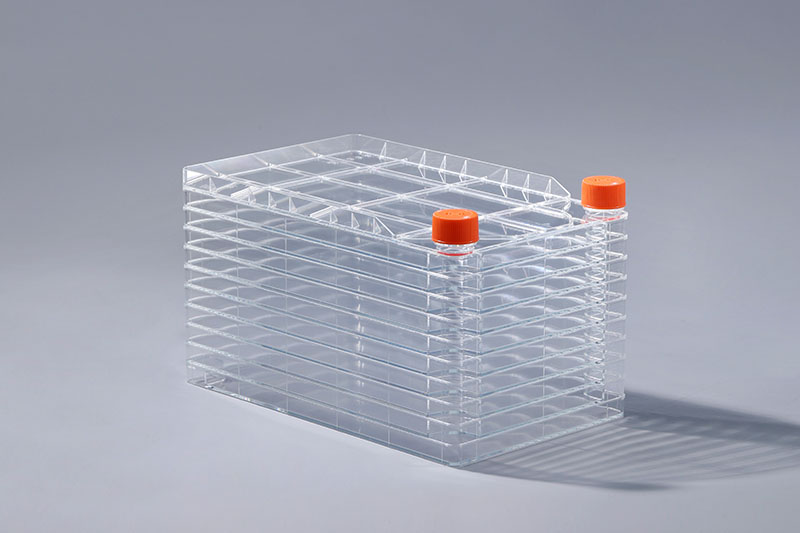The cell factory is a cell culture vessel made of polystyrene raw materials. In order to meet the needs of cell growth, the raw materials must meet the relevant requirements of USP Class VI to ensure that the raw materials do not contain factors that affect cell growth. So, in the USP Class VI standard, what testing items do the raw materials have to go through?
The USP class of medical materials is grade 6, ranging from USP class I-USP class VI, with USP class VI being the highest grade. According to USP-NF general rules, plastics tested for in vivo biological response will be classified into designated medical plastic grades. The purpose of the test is to determine the biocompatibility of plastic products and whether they are suitable for medical device implants and other systems.
USP Class VI Chapter 88 deals with in vivo bioreactivity testing, the purpose of which is to determine the effects of elastic materials on the bioreactivity of living animals. The raw materials of the cell factory include 3 test requirements: 1. Systemic injection test: A sample of the compound is prepared with a specific extract (such as vegetable oil), polyethylene glycol applied to the skin, inhalation or oral administration. This test measures toxicity and irritation. 2. Intradermal test: The compound sample is contacted with living subcutaneous tissue (the tissue that the medical device/device is intended to come into contact with). This test measures toxicity and local irritation. 3. Implantation: The compound is implanted intramuscularly into the sample. The test measures toxicity, infection and irritation.
After inspection, only polystyrene raw materials that meet the relevant requirements of USP Class VI can be used in the production of cell factories, so as to ensure that the cell growth will not be affected by the unqualified raw materials of the culture container during the cell culture process.
The FAI climbed 5.9 percent year-on-year in the first 11 months of 2018, quickening from the 5.7-percent growth in Jan-Oct, the National Bureau of Statistics (NBS) said Friday in an online statement.
The key indicator of investment, dubbed a major growth driver, hit the bottom in August and has since started to rebound steadily.
In the face of emerging economic challenges home and abroad, China has stepped up efforts to stabilize investment, in particular rolling out measures to motivate private investors and channel funds into infrastructure.
Friday's data showed private investment, accounting for more than 60 percent of the total FAI, expanded by a brisk 8.7 percent.
NBS spokesperson Mao Shengyong said funds into weak economic links registered rapid increases as investment in environmental protection and agriculture jumped 42 percent and 12.5 percent respectively, much faster than the average.
In breakdown, investment in high-tech and equipment manufacturing remained vigorous with 16.1-percent and 11.6-percent increases respectively in the first 11 months. Infrastructure investment gained 3.7 percent, staying flat. Investment in property development rose 9.7 percent, also unchanged.
 English
English



















































